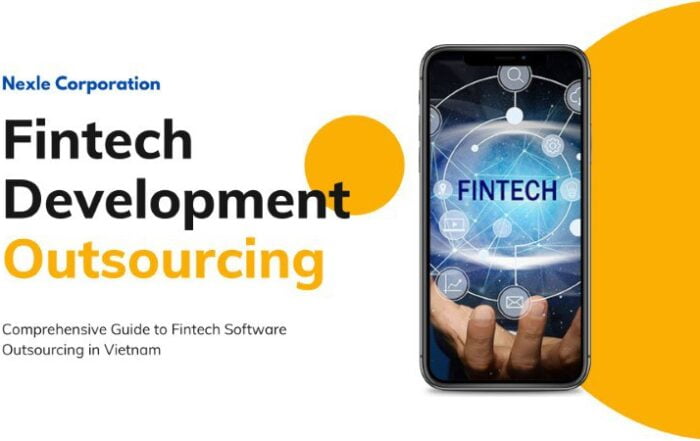More and more people use mobile devices, like smartphones and tablets, for payments. Because of this, the finance sector is seeing a growth in mobile banking. Juniper Research estimates that by 2024, the world will have 3.6 billion mobile banking users, a big increase from 2.4 billion in 2020. Mobile banking apps allow people check account balances, transfer money, pay bills, deposit checks, apply for loans, and more. In this article, we will talk about mobile banking app development. It looks at the best practices and future trends from the viewpoint of both banks and customers.
Step-by-step Guide for Mobile Banking App Development
Step 1: Research
Conducting market research is the first step in mobile banking app development. There are some questions you need to answer below:
- Who is your target audience?
- Who are your main competitors?
- Which mobile banking applications have the most users in your country? How would you make them better?
- Do you know of any excellent examples of user interface design solutions?
- Do you know what features your customers want in a banking app?
Your banking app could not be successful if it focuses on debit and credit operations while clients require it for bill payment. An in-depth investigation eliminates the need for things like that and saves money in the long term.
You may get market research and SWOT analysis assistance from a mobile banking software development company. Meanwhile, a solution architect will align the app’s design, development tools, and programming languages with the needs of the business.
Step 2: Prepare The Security Base
Mobile banking software development is all about handling significant private data from customers. This key factor sets apart the different techniques for developing mobile banking applications.
Therefore, when creating a mobile banking app, you should take into account the following safeguards:
- Hash all passwords before storing them in a database to ensure they are secure.
- The system’s front-end and back-end should provide an automated logout feature after 15 minutes of inactivity.
- Bank app developers are not supposed to have access to customers’ private data like tokens and passwords. Secure platforms like 1Password, Okta, etc., must be used to store all data.
- Make use of security certificates. In the case of a web app, this means an SSL Certificate; in the case of a mobile app, this means SSL Pinning. All information sent between a web server and browser is encrypted using these documents.
- Set up fingerprint authentication on your Android device and utilize Apple KeyChain on your iOS device for secure and private logins.
- Implement VGS (Very Good Security) to safely show your clients’ credit card numbers.
Step 3: Build a Prototype
In the process of developing a banking app, developers often create prototypes based on client insights and specific requirements. Once a prototype is approved, they can proceed with the actual program development.
To ensure the prototype accurately represents the final product’s functionality, primary research should be conducted.
- Meeting with the product owner: Here, the engineer makes sure that the product will do what it’s supposed to.
- Case studies: This is the typical structure of a user story: “being , I want to to “
- Jobs’ stories: This is where you need to focus on what the user needs. This formula may be used to build them: “Situation” -> “Motivation” -> “Expected result”
- Jobs-to-be-done: This in-depth analysis will determine the scope of the upcoming task and support the development of a solution that meets all of the customers’ requirements.

Step 4: Design UX and UI
Apps that are user-friendly and clear in their layout (including buttons, icons, and forms) receive higher ratings from customers
When transferring funds between accounts, for instance, a lot of customers complain about having to input their payment information over and again. When they pay their bills and read lengthy documents, they may feel overwhelmed and lose motivation.
A great deal of app design processes at a banking app development company starts with the building of low-fidelity wireframes. They are not too time-consuming to make and showcase how consumers can interact with the app.
Here are a few suggestions about how to improve the design of banking apps:
- Fonts, symbols, colors, buttons, and forms should all reflect your company’s branding to ensure the best welcome to your service.
- Your solution’s navigation should reflect its fundamental logical design.
- The design should be simple yet comprehensive.
- When expanding internationally, it’s important to take into account cultural differences.
- Adapt your app to iOS and Android standards.
- Sticker packs for instant messaging apps are one example of a potential added feature.
Read more: UI UX Design: What’s the Difference? (The Best Answers in 2023)
Step 5: Develop The App
Developers begin integrating the functionality of the application after getting the final approval of every previous phase’s function. Continuous testing after every key mobile banking development step guarantees that the final product performs as expected.
In addition, communicating with and providing feedback to the product’s owners frequently is necessary for ensuring the final launch meets your highest objectives. This will decrease the number of revisions and improve the pace of team processes. Developing a product might take nearly 3 to 6 months depending on the features affected.
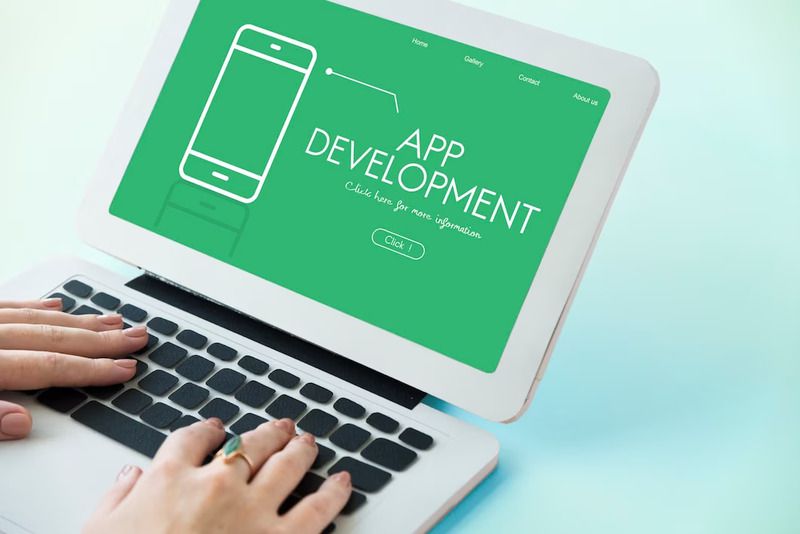
Step 6: Integrate Third Parties
When creating a financial app, it might be valuable to include 3rd party applications. With the help of external solutions, developers may create an app with a smoother flow that keeps users engaged for longer. The most important thing to look for in a third-party connection service is that it is efficient, secure, and actively supported.
Here are some of the most common tools associated with creating banking apps for mobile devices:
- Customer data analytic tool
- Users verification tool
- In-app notifications
- In-app messaging tool
- Connecting users’ bank accounts to applications tool
Step 7: Release, Maintain, and Improve
Overall, public programs can be downloaded via Google Play or the App Store, depending on the target operating system. Keep in mind that after you release your app to the public, the expenses don’t stop there. You will still need to pay for stuff like server capacity, technical support, payment gateway integration, etc.
The software may be ongoing updated and developed to meet the evolving needs of the customer’s business and the market. The results of the latest research on marketing will show you ways you can make improvements for the better. That’s why it’s accurate to consider the whole mobile banking application development process a cycle.
14 Trending Key Mobile Banking App Features
1. Bank Account Management
The key component of your mobile banking app development must be account management. Debit and credit card account information, as well as balances, transaction histories, and inter-account transfers, should all be easily accessible.
As a bonus, you may implement a “savings goal” feature and even automatically transfer micro-amounts into customers’ savings accounts often to assist them in achieving their savings targets.
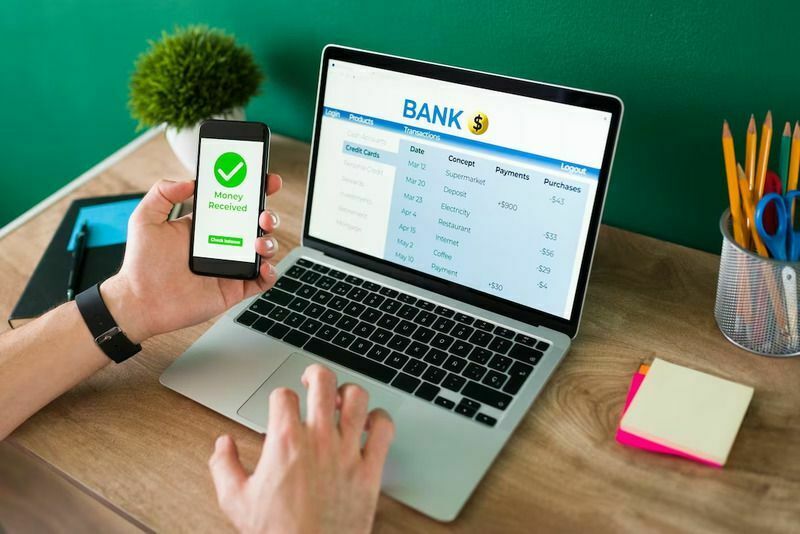
2. Payments and Transactions
People need to feel secure when inputting data during money transactions. Clients can confirm their transactions using different ways. These include face recognition, text message codes, or typing in a password. The following is a typical order of events throughout the process:
- Users may choose a recipient from a list of already filled options or create by hand a new one.
- Indicates how much money goes into it.
- Adds a line explaining why the transfer is being made.
- Gives the number of their debit card.
Checks the information, confirms it, and sends the money.
3. Authentication
Customers expect and require a high level of security for their personal information. Therefore, protecting their financial information is crucial. To achieve this, incorporating fast and reliable authentication features is important.
Multi-factor authentication is a feature that clients can choose to use. Another option is biometric authentication technology. This technology quickly confirms a person’s identity using physical traits like fingerprints, voice prints, or face scans.
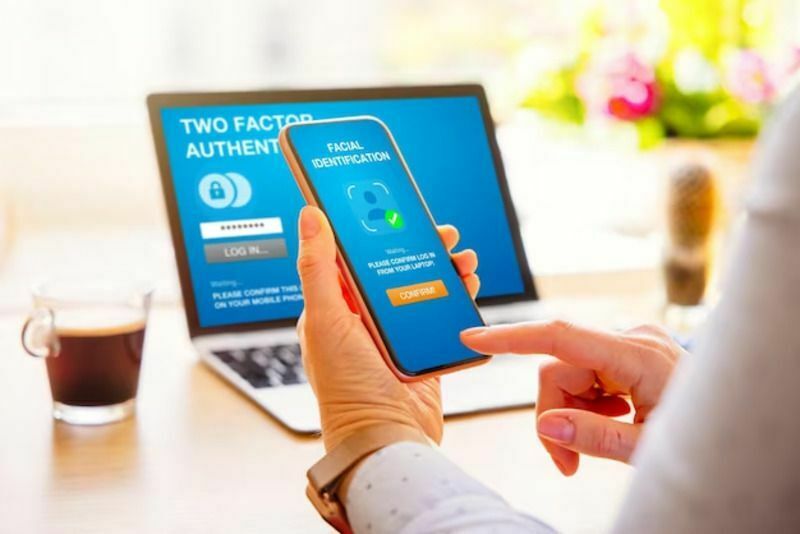
4. Chatbot or Voice Assistant
Digital banking chatbots that can be operated using the user’s voice are favored for creating engaging, innovative, and conversational user experiences for both informative and monetary transactions.
5. Bill-splitting
In order to ensure that everyone pays their fair share of the bill, the bill-splitting feature guarantees a detailed division.
6. Customer Support
Automation is key in the development of banking apps, but users should still have access to human support. Users should be able to get in touch with a bank representative or personal manager, ask questions, and have their requirements performed. There might be a need for skilled assistance or further inspections with specific roles. For instance, if you want to higher the limit on your credit card or unlock a card that has been blocked, you have to contact the bank’s staff.
And if the customer service crew can’t be reached for a while, a chatbot or frequently asked questions page powered by AI may help fill in the gaps.
7. Geolocation
When consumers need to locate an ATM, terminal, or bank branch, more than 90 percent of banking companies’ mobile apps have geolocation application programming interfaces (APIs).
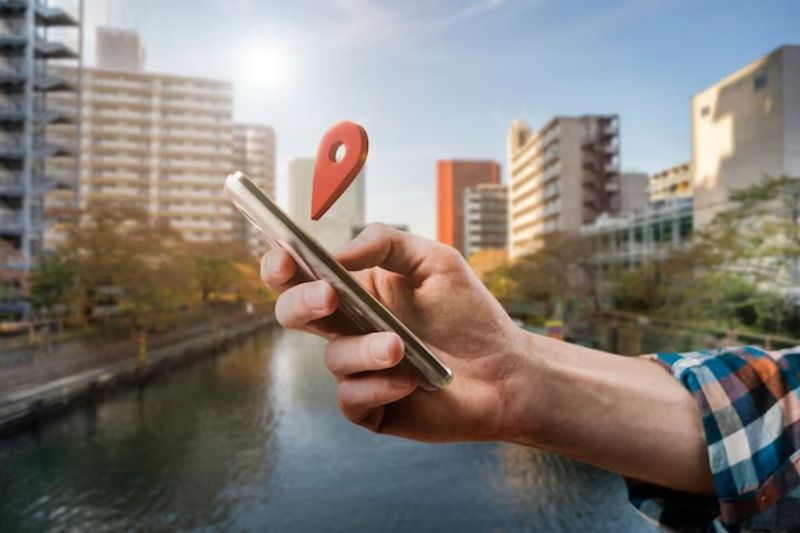
8. Push Notifications
Sending reminders and notifications to customers can significantly enhance both engagement and the promotion of services. Plus, they play a key role in security efforts, such as promptly identifying any unlawful activities. Here are some benefits to illustrate this feature’s advantages:
- Make your customers aware of the special offers and savings they may get using their online account.
- Notify them of any changes to your financial status, such as an increase in your credit limit or a paycheck withdrawal.
9. Investments
If the financial institution permits investment opportunities, it is worth considering incorporating them into the mobile app. By prioritizing customer satisfaction, the potential for growth is limitless.
A range of services like stock trading, gold, silver, platinum investments, and cryptocurrency exchange can be offered to your customers. Enhancing their experience and building a strong relationship with them is possible by providing a mobile app packed with robust investment management tools and features.
10. Personalized Offers
Offering exclusive deals and discounts is an effective way to build trust with customers. It not only attracts more customers but also boosts revenue.
11. Integration with Wearables
Smartwatches are set to deeply influence daily life, reaching aspects from exercise to banking. These wearable gadgets can show finance details, give prompt alerts, and make shopping and transfers easier.
12. Cardless ATM Access
Make it possible for your bank’s users to withdraw cash even if they have forgotten their card at home. Instead, you should request confirmation of their account by a phone identified as from their banking app or a text message.
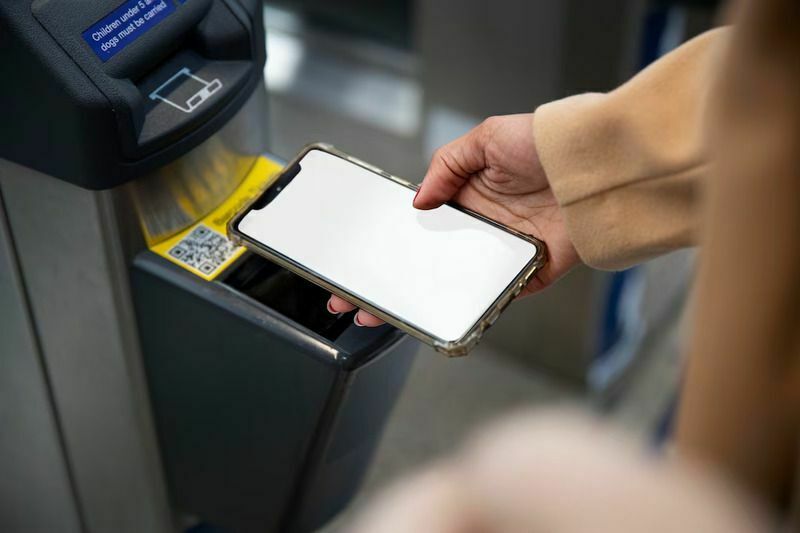
13. Prepare for 5G
When deciding whether or not to continue using a mobile banking app, the features it offers will undoubtedly be the most important consideration. As a result, new markets and marketing methods for wearables, 5G smartphones, and Internet of Things devices need to be researched quickly.
14. Expense trackers
Maintaining a solid understanding of one’s financial situation serves as an effective economic strategy regardless of the circumstances. To assist individuals in adhering to their spending plan and increasing savings, it may be beneficial to provide options for daily, weekly, monthly, and annual timeframes. This way, people can choose the most suitable timeframe for managing their finances and achieving their goals.
Benefits of Mobile Banking App Development
Your company’s potential for success will skyrocket with an expertly designed app. A few of them are listed down below:
- Better awareness
Using a mobile banking app proves your bank’s leading position in the banking industry.
- Increasing customer value
Each time people use the app, they’ll have a fresh perception of self-worth.
- Fast response times
The bank can’t provide individual attention to every one of its thousands of customers. By making the app available, you can ensure the user has an excellent experience.
- Increasing the communication channel
Mobile applications are a simple method for consumers to do transactions, instantly boosting your profit.
Challenges of Mobile Banking Application Development
Data Security
Many customers still have uncertainties regarding the security of their mobile banking apps. This poses a challenge for financial institutions aiming to create a solution that will be fully embraced.
So, we’re left wondering – how do we solve this issue? Here are a few things to consider if you want the people using your app to feel safe sharing their sensitive information with you:
- Including encryption systems
- Helping people make strong passwords
- Using multi-factor authentication
- Securely developing your data storage infrastructure
- Having session timers that reset after inactivity
By implementing these safety measures, you’ll not only make your mobile banking app more secure, but also inspire greater trust in its users. Feel free to reassure them by explaining how you safeguard their information and accounts.
If you want to go one step ahead, you could consider employing blockchain technology to enhance your data security. It’s already stirring up significant change in various fields such as healthcare, retail, insurance and finance by reducing the reliance on middlemen.
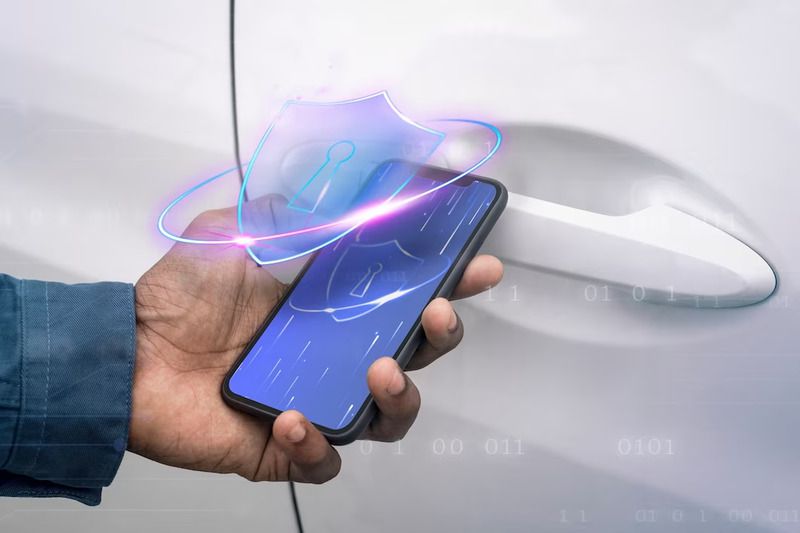
KYC Compliance
The Know Your Customer (KYC) authentication process provides even another obstacle for the developers of banking apps. It validates the user’s identification inside the confines of a certain bank branch. Users must take extra precautions to verify their information when they first access or begin using your app.
The additional difficulty here is in finding skilled risk analysts. It’ll take some time and effort to locate one.
Fast-changing Requirements
Mobile banking application development takes a lot of patience and flexibility. Especially if your business operates in the United States, where the fintech sector is expanding at an unbelievable pace. You need to adapt to the ever-changing needs of the company and the specifics of its requirements.
Legal Regulations
When kicking off a fintech software development project, it’s important to pay attention to a wide range of rules and regulations. Let’s find out what some of them are:
- GDPR
Personal information inside the European Union is governed by the regulations established by the General Data Protection Regulation (GDPR).
- PSD2
The new Payment Services Directive (PSD2) encourages safer and more convenient online and mobile payment methods and increased consumer protections across the European Economic Area and European Union.
- PCI DSS
The Payment Card Industry Data Security Standard (PCI DSS) is a continuous process to keep cardholder data secure and to advance such standards within the Payment Card Industry.
- CCPA
The California Consumer Privacy Act (CCPA) was implemented to provide individuals living in California, USA, more control over how their personal information is gathered and utilized by corporations.
3rd Parties Integration
Integrating with a third party can pose challenges and often gets delayed until the last minute, making it a time-consuming task. Additionally, it can slow down the process of mobile banking app development. Developers have to rely on mocked data until the third-party work is finished. They may need to allocate extra sprints to complete the feature. Planning and practice are essential in this regard.
The mobile banking app development is a modern process that could revolutionize the banking industry and improve people’s lives. Banks and their customers anticipate numerous advantages from the widespread use of these apps. To meet the expectations of today’s consumers, companies need to design mobile banking apps that are safe, user-friendly, and enable easy management of finances on the go.
Stay updated on this topic by reading more articles from Nexle Corporation.
Table Of Content


